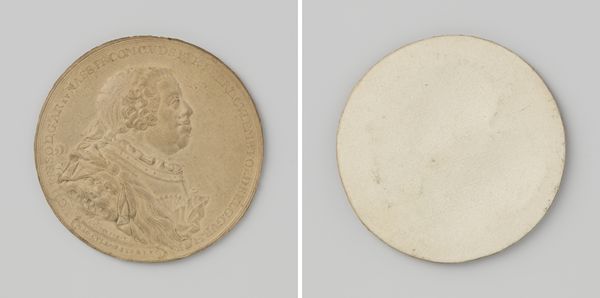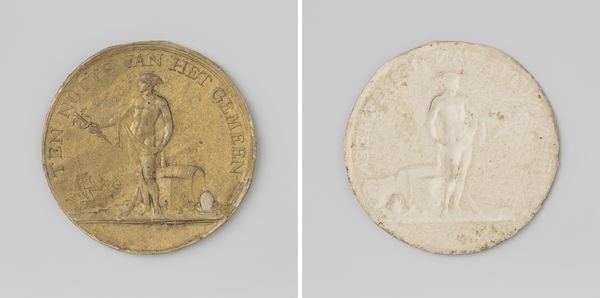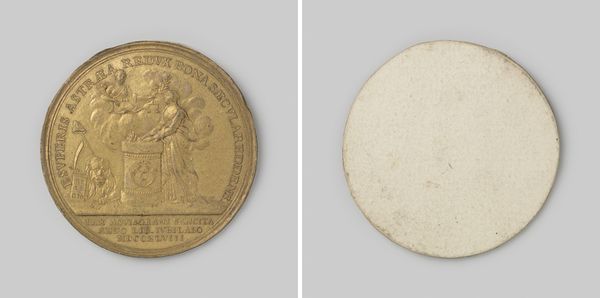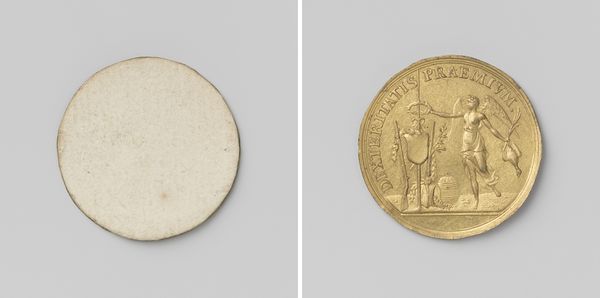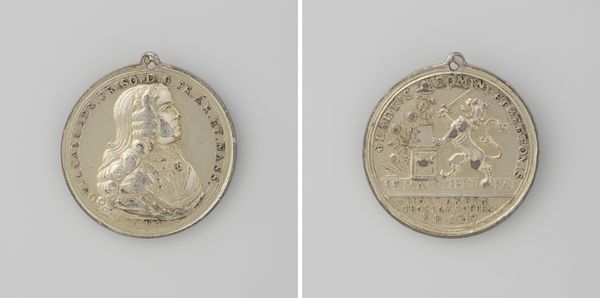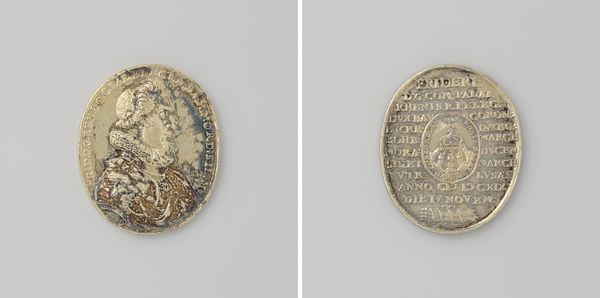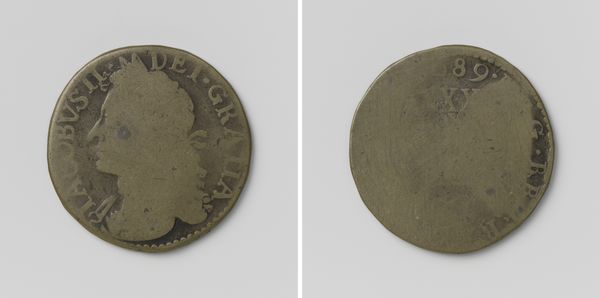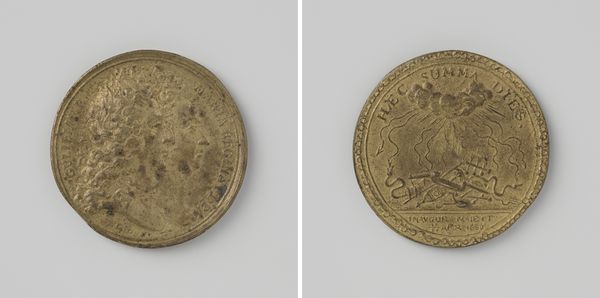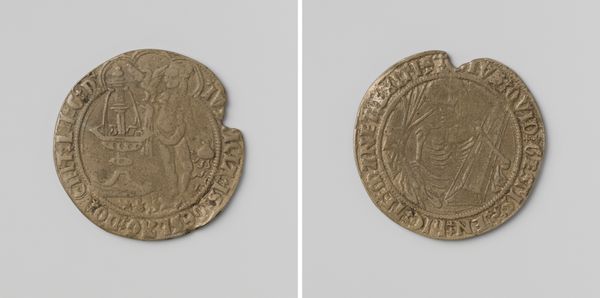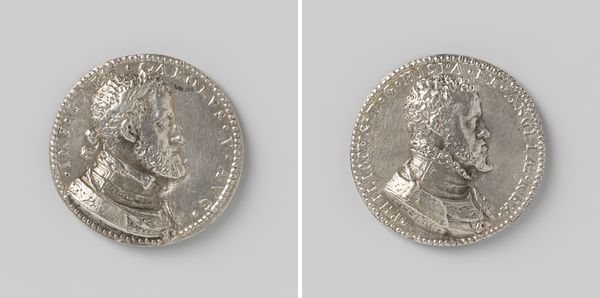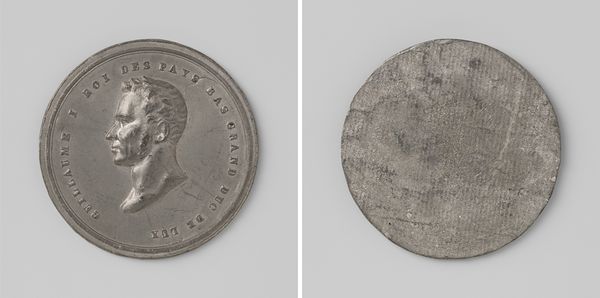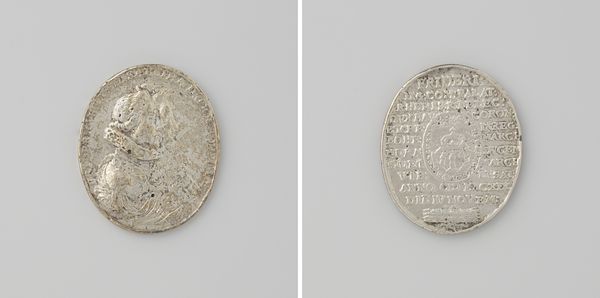
bronze, sculpture
#
portrait
#
baroque
#
bronze
#
sculpture
#
ceramic
#
history-painting
Dimensions: diameter 4.0 cm, weight 2.06 gr
Copyright: Rijks Museum: Open Domain
Curator: Here at the Rijksmuseum we have a bronze commemorative medal titled "Overlijden van Stadhouder Prins Willem IV 1751," made by Johan George Holtzhey in 1751. Editor: The piece strikes me as stark. The lack of a polished finish, almost raw in its execution, contributes to a severe, even mournful mood. What details are important here? Curator: Certainly, the profile portrait. It’s encircled by an inscription—a kind of epitaph in Latin which directly translates to, "Thus he wished to be represented to posterity, and he merited it". The halo-like cluster of stars directly above William’s head reinforces his elevated status. The deliberate use of the Latin language also connects us with ancient notions of heroic figures of state. Editor: Interesting. The inscription does set the parameters of the man's representation, which invites us to consider the material itself, this weighty bronze, almost sculptural, not painterly or graphically evocative as portraiture can often be. There are two sides presented here too... a before and after in a sense. One carefully tooled, one not at all. Curator: Exactly! And don’t forget this object's nature; this wasn’t a portrait for intimate display; it was designed to be distributed, passed on, literally circulated in order to fix and promote his image after his death. In effect, his persona became communal cultural property. Editor: Given that it commemorates a death, there’s an unusual quietude here. The carefully positioned text around the portrait, the way he's looking... not heroic, but reflective. One might almost miss the propaganda purpose beneath its dignified calm. And is that back side supposed to signify anything to me, in your eyes? Curator: It is more than possible that the roughness on the back may indeed express what remains. The lack of detail can reflect on death as what remains; nothing. On the other hand, it gives one a clean space to hold; it becomes very functional. Editor: Yes. Considering both sides like that, one about control of narrative, the other about raw potential. It's an artifact packed with paradox, designed both to celebrate a leader and to remind us, perhaps, of our shared fate, if read with its reverse as a part of its wholeness of expression. Curator: I appreciate your close read; understanding its intent along with appreciating its creation enables a greater comprehension and meaning within its social environment.
Comments
No comments
Be the first to comment and join the conversation on the ultimate creative platform.
